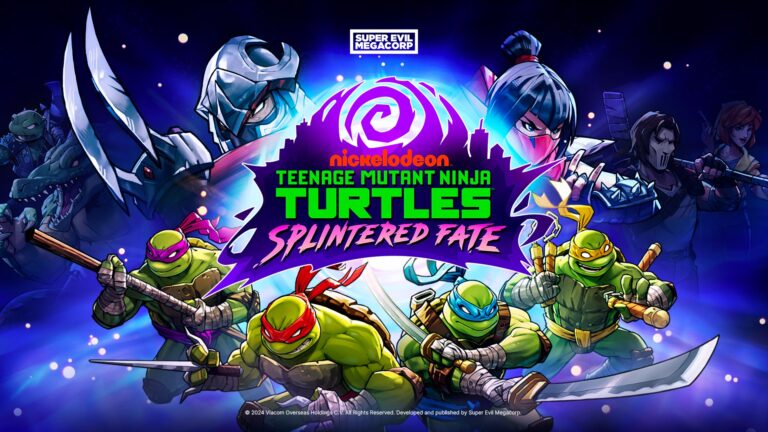Fresh off of Halo Infinite’s release date announcement and building upon recent undeniable wins including their acquisition of Bethesda and the explosion of monthly subscribers to Xbox GamePass, it would seem to all but the staunchest of Sony ponies that Xbox has been on a tear recently. While it’s true that, at least for now, seemingly nothing and no one can touch Sony’s sheer sales and worldwide install base for their PlayStation hardware family, that doesn’t seem to matter much to the Jolly Green Giant.
Instead, the house that Gates built continues to slowly but surely pick away at their rival by providing the best deals to the widest swath of gamers possible, whether that be through the variety of their GamePass offerings, the lower price point of the Series S console, or the self-styled “most powerful console ever” computing power of the Series X. It seems that for every type of gamer and just about every price point, Microsoft is offering something special thus far this console generation.
Even gamers on the go can enjoy their Xbox library on their phones, tablets, and laptops via their Xbox Cloud service, providing competition to Nintendo’s Switch. But a few big questions remain for Xbox fans looking to Microsoft with all of their gaming needs – where is Microsoft’s version of virtual reality (VR)? Is it coming? If it does, how will it differ from Sony’s upcoming new generation of their own PlayStation VR? And maybe the question with the greatest potential future ramifications: should Microsoft take the plunge into VR at all? Let’s discuss.
Stick with What Works
You have to hand it to Phil Spencer and the rest of the leadership at Xbox. Over the past few years, they took an embarrassing beginning to the Xbox One/PlayStation 4 generation and turned public perception around. When it was once almost an embarrassment to admit that you were primarily an Xbox gamer during the previous regime, in the seven years since Spencer’s been at the helm the Xbox brand has been slowly regaining its reputation among both casual and hardcore gamers alike (which is good, because I got sick of wearing that bag over my head at LAN parties).
They’ve done this by incorporating a laser-like focus on what had killed them previously: games, games, and more games. Instead of attempting to make their new hardware an all-in-one entertainment portal, as the Xbox One was originally marketed, the Series S and Series X machines were built with one goal in mind: to play the best games in the best way possible on console. It takes only a cursory look at Xbox’s last few years of E3 presentations to see how desperate they are for gamers to forget the Xbox One’s introduction as a TV-like DRM nightmare.
In recent years, all they want to show us are graphics and sound. All they want to tell us is how the exclusives are amazing and the third-party titles play best on a Microsoft-branded plastic powerhouse. Fair enough; you can’t knock them for trying. And the numbers, especially with regard to GamePass and Xbox Live subscribers, show that the messaging is working, but where does that leave VR?
Unfortunately, it might leave it out to pasture, as tinkering with what’s showing positive developments, especially for a company as large as Microsoft, is usually a recipe for disaster. Part of the reason we may have not seen anything in virtual reality from Xbox is that they’ve been focused on other realities – namely, commercial, critical and financial. It’s easy to take risks when you’ve got the kind of lead in the market that Sony currently possesses. I doubt that Microsoft wants to risk another big loss in the public eye, and virtual reality, while gaining popularity every year, still doesn’t hold a candle to the types of sales and excitement generated by Master Chief, Cortana and the gang in all their flat-screen glory.
VR vs. AR: Two Flavors of Non-Reality
Over the past few years, virtual reality has made it from something primarily found only at specialty arcades and party rooms to an experience that even regular, run-of-the-mill, non-spaceship-owning members of society can afford to have in their homes. The rapid development of the modern personal VR entertainment space has had a few big commercial wins, like the aforementioned PlayStation VR system and the Oculus Quest, as well as a few losers, like the underpowered “VR-lite” experiences offered by cell phone companies.
Like the modern 3D craze of the mid-2000s (remember that nonsense?), several major entertainment companies jumped on board with their own offerings. Virtual reality has been virtually (see what I did there) everywhere, except on Microsoft-branded store shelves. Or has it just been biding its time? While their competitors in the videogame market have been striving to craft the best version of what we know virtual reality to be in the present (that is, a silly-looking helmet and a few equally-silly looking peripherals that the player swings around in a silly manner) Microsoft may be developing what might be the next big step in interactive entertainment: not VR, but AR, or Augmented Reality.
Microsoft’s HoloLens has been in development for several years now, and while they’ve been coy about its application as a gaming and entertainment technology, they did utilize it for a special E3 presentation all the way back in 2015. More recently, contracts with the Army and medical companies have been detailed, and their recent public statements on the matter have made it clear that Microsoft is ‘absolutely’ building towards a commercial release for the hologram-infused hardware. Will we one day soon be able to look at our couch and see a spaceship, or use a pillow as a shield in the Elder Scrolls universe? Who knows (except probably Bethesda)?
Remember the Virtual Boy? Neither Do I
The potential for something like HoloLens to completely change the ‘alternate gaming’ landscape is huge. And looking at the competition on the console side of the equation, Microsoft just might wipe the floor with Sony and Nintendo should they drop an AR bomb in the next few years. But should they? As cool as VR and AR can be – and they certainly can be – they aren’t for everyone.
Virtual reality has opened up a plethora of new experiences to gamers of all ages, but widespread adoption remains something that is still very much up for grabs, due to hardware and software limitations. Several gamers continue to experience significant levels of motion sickness thanks to VR gaming, and in order to produce hardware that is capable of the fast refresh speeds necessary to negate some of those nauseating issues, VR game developers have had to dial back the graphical bells and whistles that modern-day gamers have come to expect. Then there’s the question of how to solve things as seemingly simple, and yet as frustratingly complex as character movement within the VR space.
What good is the ability to be transported to a virtual world if you get seasick after five minutes and can’t walk straight while you’re in it? I have no doubt that hardware and software developers will find answers to these problems, and inevitably, when the next iteration of VR products from the likes of Valve, Oculus, and Sony arrive, even more gamers will line up to experience them (and hopefully not need Dramamine to do so).
Will Microsoft provide another competitor or an alternative? As someone who has been impressed thus far with their hardware from the current console generation, I’m curious to see what they could do – but as a proud (thanks, Phil!) Xbox fan, I remain cautious. With this emerging technology still half-baked, it might be best for Xbox to stay the course and keep hammering home games with worlds that end at our TV screens. If they don’t, they could have a Virtual Boy on their hands, and we all know how that turned out – or, we would if anyone remembered it.
No related posts.






